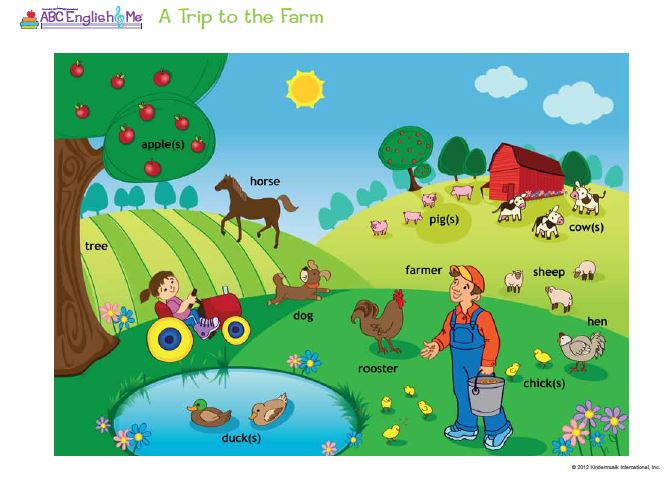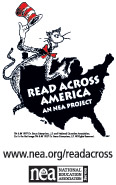Kindermusik was fortunate to contribute a guest blog post on the Reading Rainbow blog. As our missions align, in inspiring children through reading and music, we are grateful for this opportunity and are excited to share with our community!
—————————————————————————————————————–
Special Guest Post: Kindermusik – Steady Beat: It’s more than just music!
Admit it. You know you do it. You just can’t stop yourself. There you are driving in the car and you find yourself doing it. Unconsciously, you nod your head or drum the steering wheel along to the beat of the music you hear. Thanks to the steady beat of our hearts, we are naturally wired for responding to a steady beat. Even an infant is born with the ability to keep a steady beat – his own internal beat, particularly after 9 months of hearing Mom’s heartbeat while in utero! However, the ability to consciously recognize and demonstrate steady beat takes practice – and can lead to far greater moments in child development.
Why steady beat matters in music, child development, and reading
The most basic property of music is steady beat: the underlying, unchanging, repeating pulse. If you’ve ever come to a Kindermusik class for toddlers, babies, big kids, or families, you’ll notice that we include a steady beat activity every week, in every age group from newborn to 7. It might involve instruments, reciting nursery rhymes, singing, dancing, lap bounces, rocking, or even, yes, tiptoeing. There’s a reason for that. We know that the capacity to identify and maintain a steady beat can be used for more than singing or playing an instrument.
• For babies: Exposure to steady beat (hearing it, feeling it, “seeing it”, and being moved to it) is natural, but very important for a baby’s developing sense of steady beat and the world around him. An  internalized awareness of beat and rhythm helps a baby to coordinate movements.
internalized awareness of beat and rhythm helps a baby to coordinate movements.
• For 18 months through 3 years old: At this age, children are learning to control and coordinate their body’s movements. The ability to keep a steady beat helps them to walk with a smooth gait, leading to running, jumping, and dancing with confidence.
• For preschoolers and early school-aged children: Steady beat competency is central to the development of movement organization, such as marching in time, dribbling and shooting a basketball, using scissors and writing smoothly.
 But that’s not all! The best thing about steady beat is its contribution to early literacy and language development.
But that’s not all! The best thing about steady beat is its contribution to early literacy and language development.
An understanding of the concept of a steady beat helps a child speak and read with a smooth cadence, thereby enhancing communication abilities and reading comprehension. After all, the same sense of steady beat experienced in music can be experienced when reading. Ever try reading a Dr. Seuss book without a sense of rhythm or steady beat? One fish, two fish, red fish, blue fish just wouldn’t be the same without it! It’s no wonder that research shows children who can keep a steady beat score higher on reading assessments. They also rate higher on math tests AND behave better in class.
4 steady beat activities for families
As a child’s first and best teacher, parents can set their child on a path to “go anywhere and be anything!” Try these activities together to reinforce a sense of steady beat and support a child’s emerging literacy skills:
1. MOVE! Turn on music and pretend to be a marching band. March, stomp or jump to the music. Dance with them around the room to the steady beat of the music.
2. Play Instruments! Use children’s instruments or make your own. Practice keeping a steady beat along with the music. Homemade drums and instruments are great additions to your pretend marching band or family dance party!
3. Read and Sing Nursery Rhymes! Clap or tap along as you recite your child’s favorite rhymes.
4. Have a Steady Beat Treasure Hunt! Search for things that make a steady beat. The clock? Dripping water? Microwave timer? How many can you find?
To learn more about enrolling in a Kindermusik class and receiving access to Kindermusik@Home where families can access musical eBooks, kid’s songs, learning games, and more parenting resources, visit Kindermusik.com.
 Reading Rainbow wants to thank Kindermusik for contributing to this weeks guest blog on early literature and music. We appreciate their support in our mission to inspire a love of reading in children and connect them to the world they live in through quality literature so they can “Go anywhere. Be anything.“
Reading Rainbow wants to thank Kindermusik for contributing to this weeks guest blog on early literature and music. We appreciate their support in our mission to inspire a love of reading in children and connect them to the world they live in through quality literature so they can “Go anywhere. Be anything.“
Try our FREE iPad App in the App Store, download any of our Classic episodes on iTunes or learn more about Reading Rainbow and all our digital products at http://www.readingrainbow.com.
 They say that a picture is worth a thousand words, but in ABC English & Me, Kindermusik International is using the research-proven technique of using a picture to help a child learn to read a word. In fact, a recent study by Chinese researchers again confirmed the impact of a visual-rich context on literacy.
They say that a picture is worth a thousand words, but in ABC English & Me, Kindermusik International is using the research-proven technique of using a picture to help a child learn to read a word. In fact, a recent study by Chinese researchers again confirmed the impact of a visual-rich context on literacy.



 Yes, we know that today is February 28. But that means that tomorrow is March 1, and March is
Yes, we know that today is February 28. But that means that tomorrow is March 1, and March is  Musical Instruments from A to Z
Musical Instruments from A to Z


